How to plant and grow chestnuts?
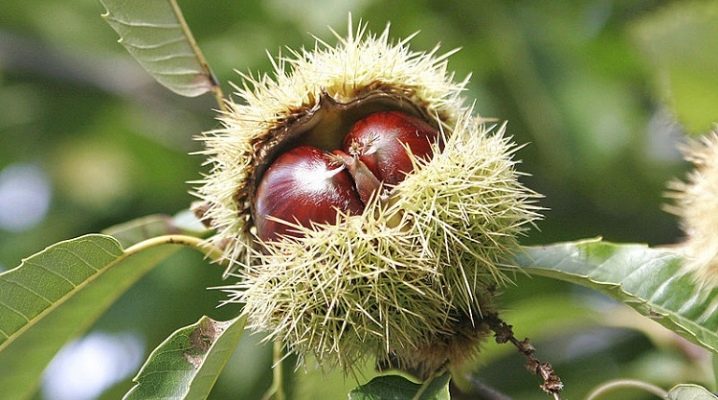
Chestnuts are tall, beautiful trees that produce spherical brown fruits. Such fruits are often used by children for games, and they also make a lot of autumn crafts. Chestnuts grow in alleys and parks, and just on the streets. But it is realistic to grow a tree on your site. It is only important to choose the right variety and take good care of it.

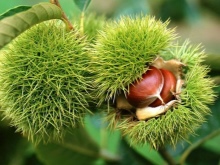

Selection and preparation of seed
When choosing a variety of chestnut for cultivation at home, one must understand that not all species are suitable for this. If you want to grow chestnuts solely for decorative purposes, then you can choose a regular horse. This is exactly the subspecies that grows on the streets of cities. If there is a desire to cultivate chestnuts with edible fruits, then you should choose special varieties, since you cannot eat horse fruits. The three most popular edible varieties are:
- sowing;
- the softest Chinese;
- Japanese.
The cultivation of such a culture always begins with the choice of planting material. Collect only those chestnuts that have fallen to the ground. Nuts growing on a tree do not differ in ripeness, so they will not be able to germinate. Examine the fruit carefully. They should be dark brown, glossy and completely flat. Cracks, chips, roughness - all this indicates poor quality material.
Chestnuts are best harvested in October. So the nuts have time to fully ripen. Going for fruits is worth the massive aged trees, there is always a lot of good material. It is better to collect several fruits at once. Practice shows that out of five copies, at best, two will emerge. All collected fruits at home should be sorted out again, selecting the most even and beautiful ones.
Important: if you plan to grow an edible variety, picking chestnuts on your own is pointless. The suppliers of such seeds should be consulted.

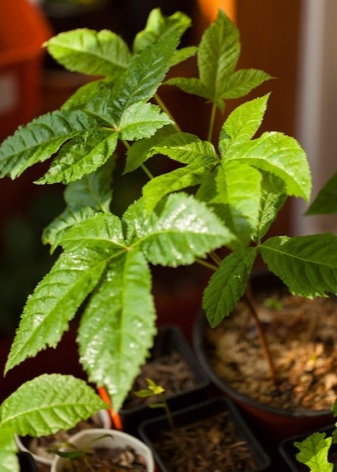
Sprouting a nut
Harvested chestnuts must be germinated before planting, so the culture will be more hardy.... For germination, you will need sand, which should first be disinfected using an oven. It is worth doing this a couple of months before application, since the soil must recover.
Next, the prepared sand is poured into a container and moistened. Nuts are placed in the substrate, and then the container is taken to the cold. Rural residents can place the container in the basement or dig it in on their site, covering it with snow. Those who live in the city can store the nuts in the refrigerator. From time to time, the container needs to be taken out in order to spray the soil with water. Remember that the sand should be slightly damp at all times.
Nuts harvested in this way should lie until early spring.... 7 days before planting in the ground, the fruits are taken out of the sand... They are put in water for 5 days. The water should be changed several times a day. After the allotted time, the peel of the nuts will become much softer, and a sprout will be able to break through the cracks. Once you see it, the chestnut can be planted.
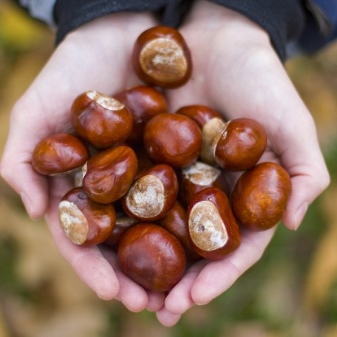
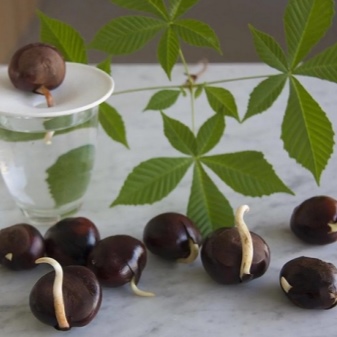
Planting seedlings in pots
If everything worked out, and you managed to germinate the fruit correctly, then now is the time to plant it in a pot. If you grow several nuts, then it is better to take a separate pot for each, so that later you do not have to bother with replanting. Pots should have a capacity of at least half a liter.Drainage holes are made at the bottom of the container, then any soil is poured into the pot, since chestnuts are absolutely unpretentious, they will grow where they plant. If the land is from the garden, it must be disinfected. The soil is moistened, and then a seed is sown there, the depth will be about 5 centimeters.
Do not completely cover the nuts with earth, otherwise it will be difficult for them to germinate. You will see the first shoots above the ground in 21 days, sometimes it happens even earlier.... Planted seeds require minimal maintenance. The pot should be located in a well-lit place, and as the topsoil dries up, the seedling should be watered, but not too abundantly. Excess moisture is always detrimental to plants.
The room should not be cold, 25-26 degrees Celsius is the optimal temperature. Young growth should be protected from drafts, but stagnation of air should not be allowed.
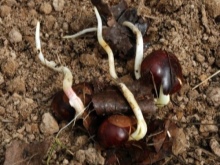
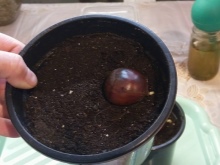

Where and how to plant seedlings?
In order for the tree to grow beautiful and healthy, it is necessary to carry out the correct transplant. To do this, you will have to take into account a number of nuances.
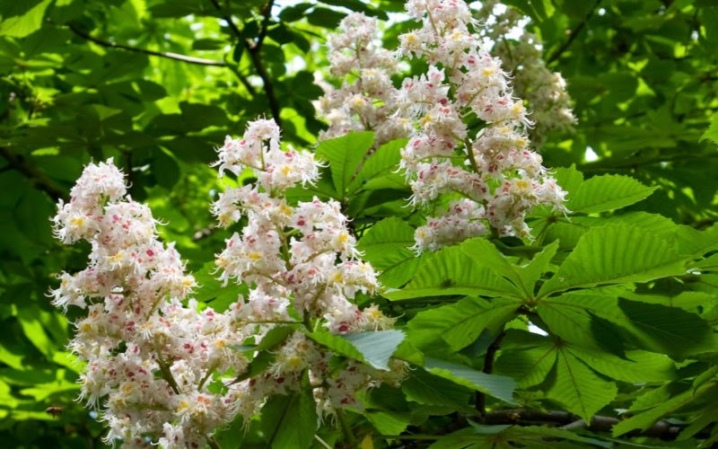
A place
The first thing to note is volumes of chestnut. This plant can reach 35 meters in height, and its crown is so huge that it will cover a considerable part of the plot in the country. Not a single vegetable crop will grow under the crown, and this must be taken into account when determining the place for planting. Best of all, the shade under the crown is suitable for arranging a relaxation zone, because it will always be cool here.
A culture like chestnut loves an abundance of space. Therefore, the seedling should not be placed near the house or fence. There should be a distance of 10 meters to the nearest structure. No other crops can be located at a distance of 5 meters on all sides. Chestnut has an ambiguous attitude to light. An adult tree should be located only in lighted areas, but young seedlings do not like an abundance of light. They will need to create an artificial shadow. Climbing shrubs or other tall trees will help with this.
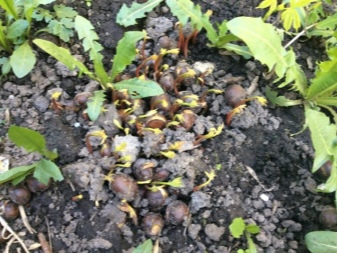
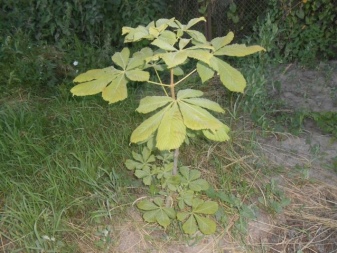
Timing
You can transplant a tree as in the springand in the fall... If the planting is spring, the seedlings are transferred to open ground after the threat of night frosts leaves. In hot regions, it is already the beginning of May. In the cool ones, you will have to wait until the beginning of summer. In autumn, they are planted during a period when the temperature is about +12 degrees, not higher. But the autumn planting refers only to the nuts themselves, and not to the seedlings grown from them. We will talk about it a little later. By the way, some gardeners do not plant sprouts of the first year in the ground. At the end of spring and summer, the pots are taken out into the street, the seedlings are looked after in the standard way. In the fall, the container is brought into the room. Shoots are planted for 2 years.
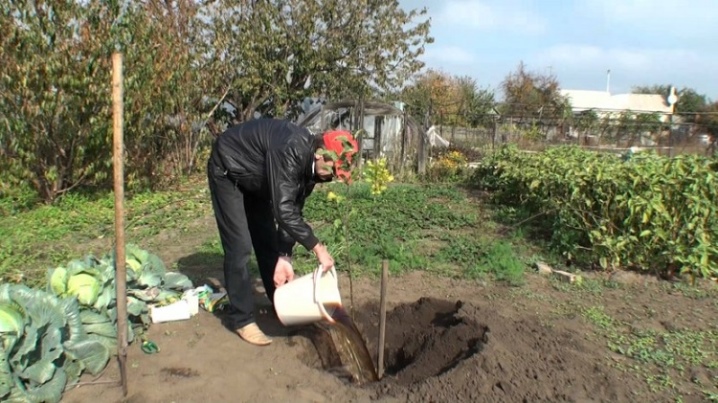
Preparation
The preparatory measures consist in the correct digging of the hole, since the seedlings are already ready for planting. Planting holes should have a diameter of 0.5-0.6 meters. The depth will be half a meter. Chestnut is undemanding to soils, but it will grow fastest on loamy soils, well seasoned with various dressings. Please note that the earth must be well nourished, and this is not a quick process. Therefore, the holes are prepared in a few months.
In the process of preparation, vegetation is added to the bottom. A variety of branches, grass, dung are good. Then mark the place where the chestnut root is supposed to be located. Compost is poured up to this mark; humus can also be used. The earth poured into the pit must be mixed with ash and superphosphate. The first ingredient goes in an amount of 0.5 kg per bucket of soil, the second will be enough 2 tablespoons.
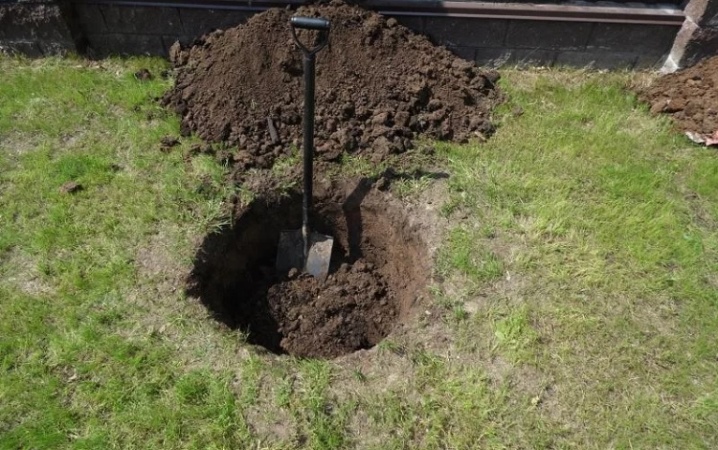
Landing technology
By spring, the remnants of the plants in the pit will be peeled off, and the hole will be ready for planting a seedling. At the bottom, drainage must be placed, the layer of which will be about 20-30 cm... A chestnut seedling is placed in the central part of the hole and begins to be covered with earth from all sides, trying to avoid air pockets.The root collar is not buried; it must remain at ground level.
After planting, the land around the tree is tamped, and then watered well. A peg made of wood is placed next to the seedling, which at first will serve as a support for an immature sprout. Important: the mound formed after planting should be 20 cm above the ground. This is necessary so that the trunk of the tree does not become exposed due to precipitation and soil shrinkage. It is worth mentioning separately about the technology of autumn planting. Pick the best pieces, at least 7, and then soak them in water for a week. Change the water regularly. After this procedure, the fruits will swell, and they can be placed in the refrigerator for 2 weeks, sprinkled with wet river sand.
Further, grooves are dug in the soil 10 cm deep... Nuts are spread there, keeping a distance of 50 cm. The groove should be well moistened, when watering it, take water with several crystals of manganese. The planted fruits are lightly sprinkled with soil and sand, and fallen leaves are placed on top (make sure that it is from healthy plants). In the spring, the leaves are raked. After the sprouts appear, grooves are made next to them for irrigation. In the spring, they are groomed in the traditional way. In autumn, the grown seedlings can be planted in different places, or they can be left for another season to get stronger.
But remember that the distance between trees must be at least 5 meters, so sooner or later the seedlings will start to compete.
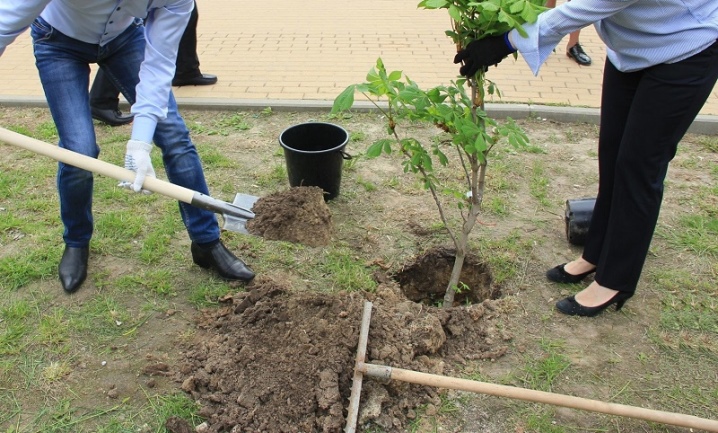
Care
Growing healthy chestnuts is easy. Care will not seem time consuming to any gardener, because this tree grows beautifully in nature and without human participation... Trees grown outdoors are considered adults at the age of 5 years. Until this time, the trunk of the culture is very fragile, the garter poem will become an indispensable moment. This is especially true for regions where strong winds often blow. The plant begins to bloom at about 6 years old, but often the first flowers can be expected only at the 8th year of the culture's life.
Chestnut - a very moisture-loving plant. So that it does not inhibit growth, regular watering will be required. The first year of life, the tree is watered especially often, in normal weather it will be enough once a week, but if there is a drought, then the procedure will have to be increased. The soil should be soaked to a depth of 10 cm. At the same time, light moisture in the upper layer should always be present. As the trees mature, the frequency of watering can be gradually reduced. At the age of 10 years, the plant will be able to exist exclusively on rainwater.
Growing young chestnuts will not be complete without mulching. The seedlings need moisture, and it should be kept in the soil for as long as possible. Mulch will do a great job with this, which will also be of great help in the fight against weeds.
It is better to take organic mulch: straw, cut grass, sawdust, pine needles. Now we will consider other features of caring for chestnut in the country.
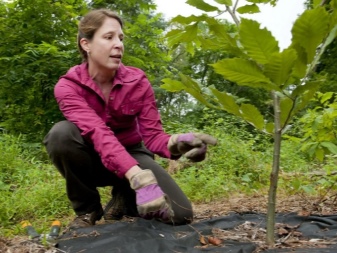
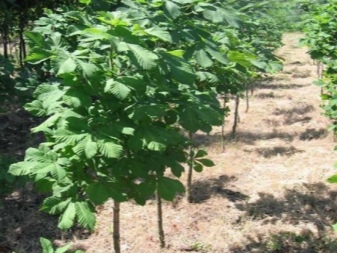
Top dressing
Top dressing is necessary only for young trees, since an adult crop independently obtains food from the ground. On average, a young sprout will need three additional fertilizing per year. In the fall, nitroammofoska is introduced into the soil. In the spring, they are fed with urea, and in the summer, the plants are given a diluted mullein. This is enough for the trees.
Experienced gardeners, who have been dealing with culture for several years, sometimes temporarily stop feeding altogether. If the chestnut actively blooms and bears fruit, it means that at the moment it does not need anything. However, if the plant is frail, demonstrates slow growth, then you can additionally feed it with minerals.
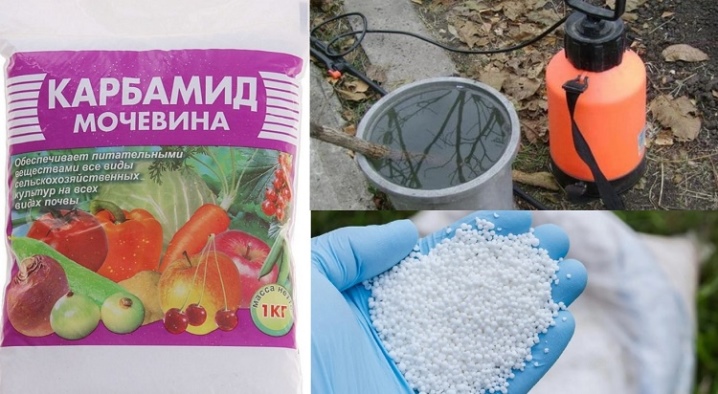
Pruning
Chestnut is slow growing. For the first 10 years, it will grow weakly, giving an increase of only a few tens of centimeters. They begin to form the crown when the tree turns three years old. First, a quarter of the trunk is trimmed in the center, in the next season, the side branches are also shortened. Year after year, the manipulations are repeated until the crown is formed.
At the age of about 10 years, the chestnut starts to grow actively and rapidly. By this time, the crown should already have a beautiful shape. Now the gardener will only have to remove dry, diseased, as well as branches thickening the crown. When pruning adult chestnuts, only thinning should be limited.
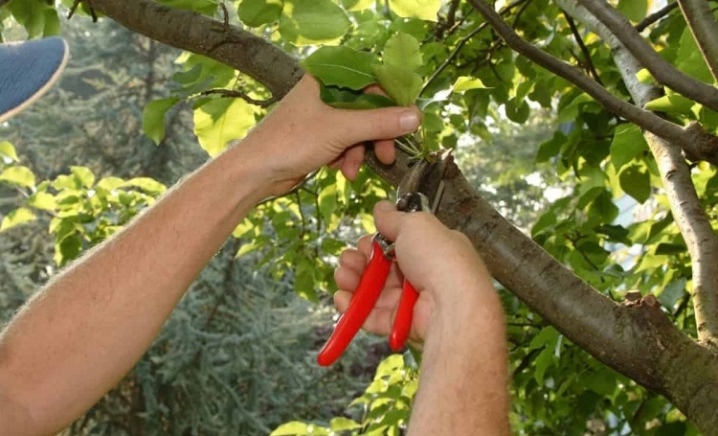
Preparing for winter
Chestnut shows good resistance to cold, but this does not apply at all to young seedlings. Plants must be covered for the winter, especially in regions such as Siberia, the Urals, regions with an unstable climate and harsh winters. First, the trunk circle is covered with a good layer of mulch. Then the seedling is wrapped in burlap. The fabric is carefully secured so that it is not blown away by the wind. Such shelters for trees should be made until they are 6-7 years old.
Sometimes it also happens that not only a seedling, but also an adult tree suffers from frost. Cracks in the bark will serve as a signal of freezing. They must be treated with antiseptic agents and covered with garden varnish.
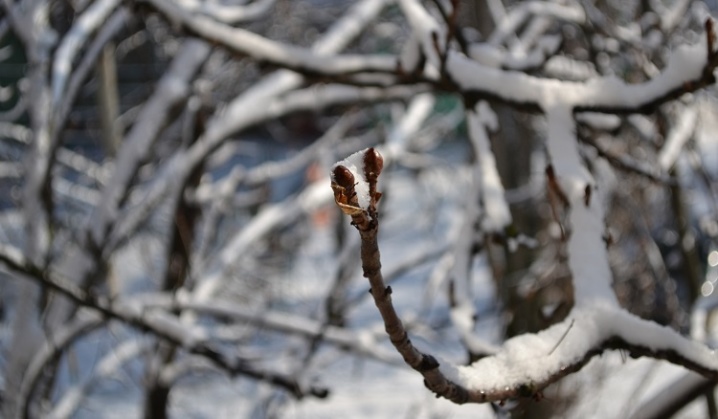
Diseases and pests
With proper and good care, the likelihood that the chestnut will get sick is almost zero. However, it is impossible to foresee everything. Therefore, it is better to find out in advance what the chestnut is sick with most often.
- Powdery mildew. It is characterized by the appearance of a white bloom on the foliage. The tree weakens, sheds leaves early, its immunity will be low. It is possible that even an adult tree will be unable to overwinter. It is necessary to get rid of powdery mildew with fungicides. The diseased branches are cut and burned.
- Chestnut moth. A very dangerous pest capable of destroying almost all the foliage on trees in a short time. Once the butterfly years have begun, it is recommended that insecticides are applied immediately. Lufox 105 EC acts especially well against this pest.
- Wood mite. A tiny insect that very quickly sucks sap from foliage. The foliage affected by the parasite falls off, and the larvae are in it, which then turn into adult insects. "Karbofos" works best against ticks. All fallen leaves must be immediately removed from the site, and too affected - cut off.
- Hole spotting. In this disease, the leaves are covered with small brown specks, which subsequently rot. To get rid of the disease, you need to spray the trees with Bordeaux liquid. It will take at least three procedures. The interval between them will be 10 days.
- May beetle larvae. These pests are very fond of tree roots, especially young ones. The best way to deal with beetles is by manual removal. Digging the soil in the near-trunk circle and loosening should help get rid of the parasites.
In order for insects and diseases to bypass the chestnut, you need:
- cut dry tree branches;
- do not let fallen leaves rot on the ground;
- feed the plant on time;
- do not forget that excess moisture is even more harmful than lack;
- plant trees at a sufficient distance from each other so that their crowns do not cling;
- handle the tools with which you work at the summer cottage.
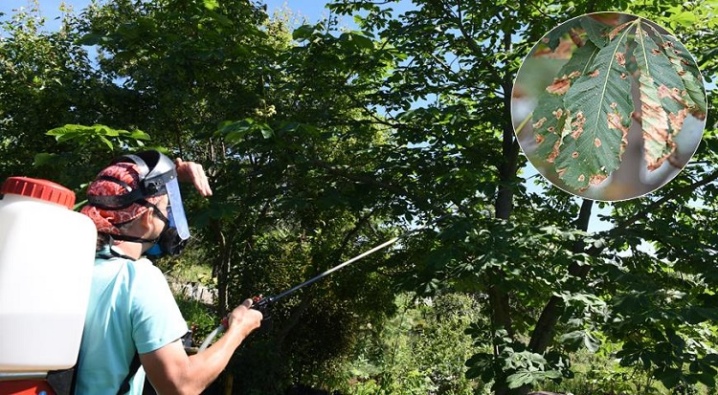



































































The comment was sent successfully.